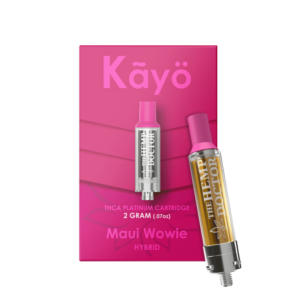Learning how to clone a cannabis plant should be on the bucket list of every cannabis grower because, unlike cultivating cannabis with seed, cloning ensures that the most desirable traits of the mother plant are passed on to the “offspring.” In other words, you get to reproduce not just the potency but the aroma, flavor, and even growth characteristics of your GOAT strain. If done well, you are also likely to get higher yields.
This blog not only shows you how to clone cannabis step by step, it goes further to suggest the best cloning methods for different expertise levels and offers tips on troubleshooting common cloning issues.
🔑 Key Takeaways
- Successful cloning always begins with a healthy mother plant.
- Cloning guarantees consistency you can’t get from seeds.
- Rooting hormones improve your chances of success.
- Factors like light, humidity, water, and nutrients require moderation.
- Troubleshooting common cloning issues is part of the process; be prepared.
The Basics of Cloning Cannabis
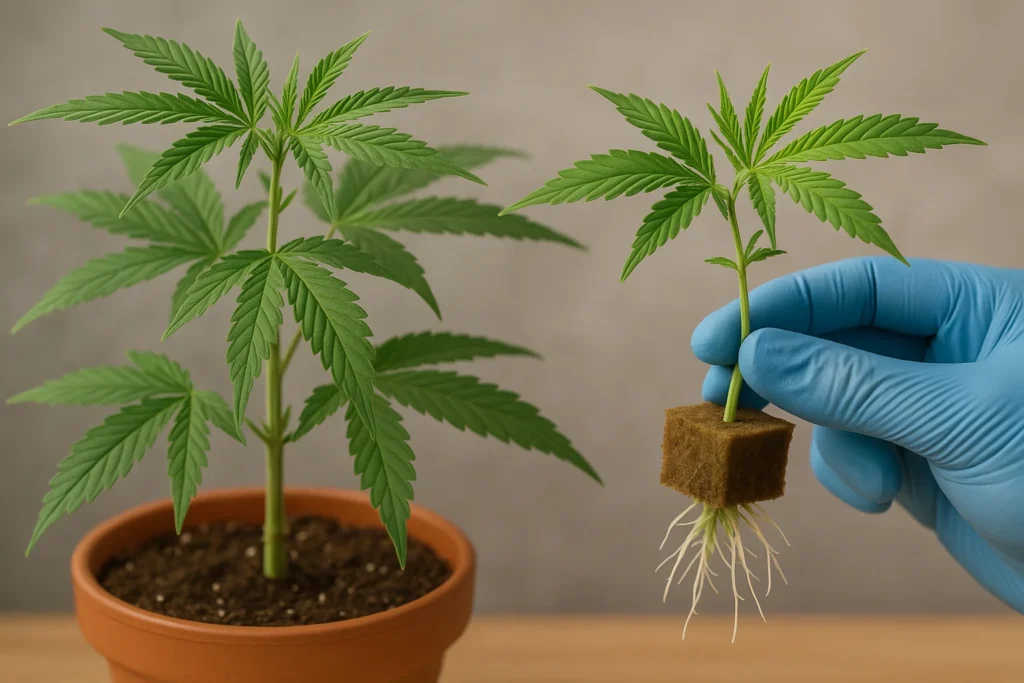
The basic concept of cloning cannabis involves taking a cutting from a healthy, mature “mother” plant and stimulating the growth of new roots. To achieve this successfully, you need to get three things right: select the right mother plant, make the correct cut, and create an optimal growth environment.
The best time to take clones is when the mother plant is in the vegetative stage. At this period, the plant is focused on growing stems and leaves. This increases the chances of a successful rooting process.
Cloning is desirable because it preserves ideal traits from the mother plant, such as potency, flavor, growth characteristics, and disease resistance. Unlike growing cannabis from seed, cloning removes the guesswork from growing cannabis. It ensures that every clone will grow, flower, and produce buds that are similar to those of the mother plant. This is particularly challenging when growing from seed. In other words, cloning is unique because it guarantees consistency.
Cloning cannabis allows growers to reliably reproduce their favorite strains with the desired traits, saving time.
How to Clone a Cannabis Plant: Step-By-Step Process
Cloning cannabis is not as complicated as some may make it appear to be. The trick is to follow a detailed step-by-step guide that’s easy to follow yet doesn’t omit any critical steps. Here’s one that’s ideal for complete beginners, intermediates, and pros can use it as a benchmark as well.
Step 1: Select Your Mother Plant
For beginners, you want a strain that is resilient and easy to grow. Popular strains for cloning include Wedding Cake, Tahoe OG, Menage, and Dream Diesel, among others.
Once you have chosen the strain, select a healthy, pest-free mother plant that is ideally in the vegetative stage. Traits to consider include robust growth, healthy green leaves, and no signs of nutrient deficiencies. Avoid those in the flowering stage, as they are less likely to root successfully.
Step 2: Gather Your Supplies

Prepare the following tools and supplies:
- A sharp, sterile razor or scissors
- Cloning solution, cloning gel, or a rooting hormone
- Growth medium, such as rockwool, coco coir, or soil
- Humidity dome
- Spray bottle with clean water
- Grow lights or a warm, indirect light source
- Clean workspace
Step 3: Take the Cuttings
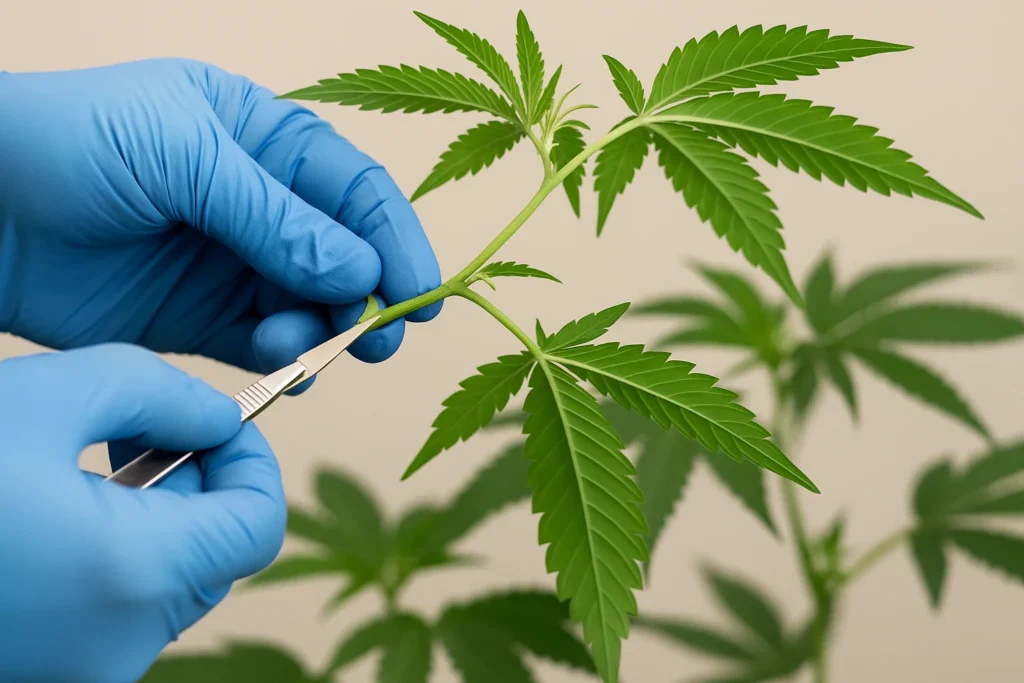
With your tools ready, it’s time to take the cuttings.
1. Trim any large fan leaves to help the cutting focus energy on root growth.
2. Select a healthy branch from the mother plant that is about 4 to 8 inches long.
3. Using a sharp, sterilized razor blade or scissors, cut at a 45-degree angle just below a node (the point where leaves attach to the stem). Cutting at this angle provides greater surface area for root development. It also helps to prevent water from pooling on the cut surface, as this may cause rot.
4. Remove the lower leaves on the stem to prevent them from rotting once planted. But leave a few leaves at the top to allow the cutting to continue photosynthesis.
Step 4: Apply Rooting Hormone
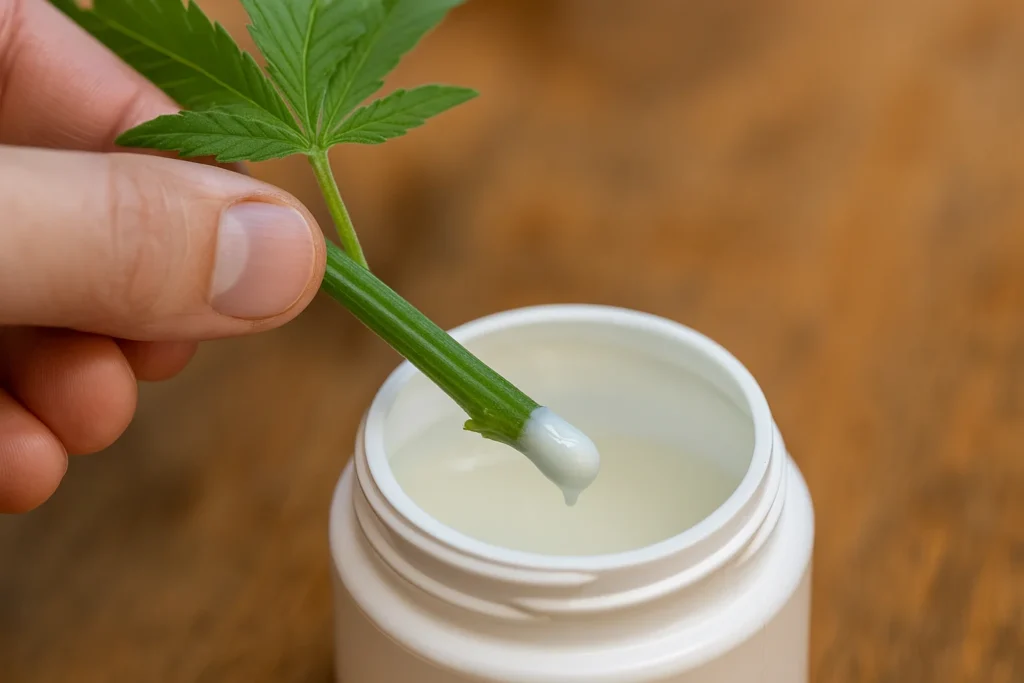
Dip your cutting into the rooting hormone immediately to boost the chances of rooting. Tap off any excess hormone to prevent clumping, which can interfere with water absorption.
Rooting hormones mimic the natural plant hormone, auxin, which promotes root growth. They may come in gel, powder, or liquid form. The hormones stimulate the growth of roots and also protect the cutting from infections. This step plays a critical role in ensuring that your cutting takes and can grow and thrive.
Step 5: Place in Growing Medium
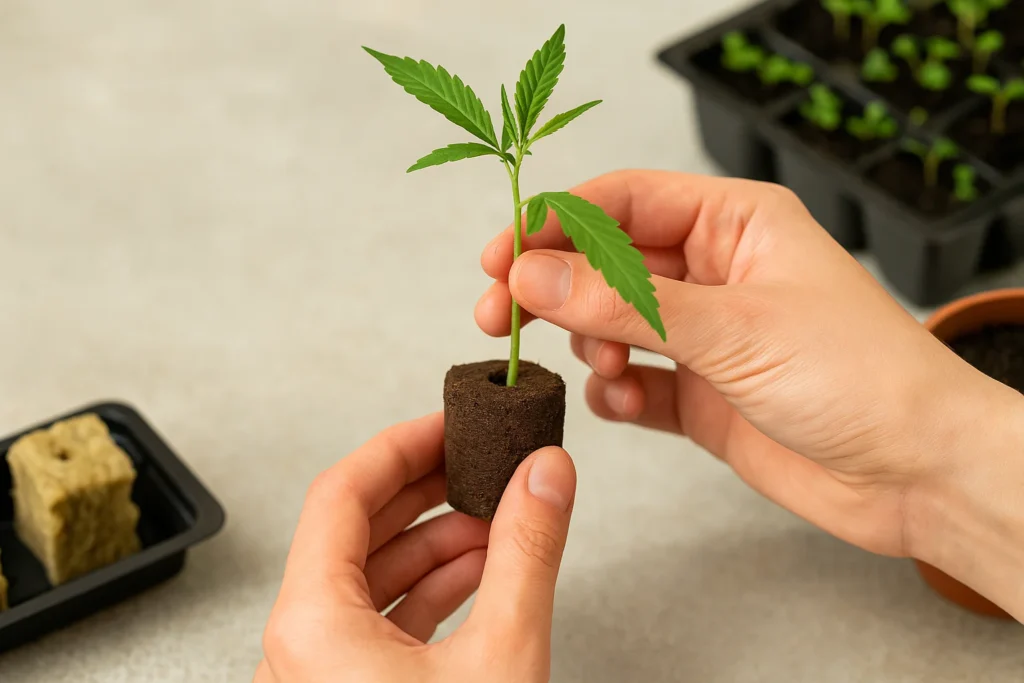
Have your growing medium ready because immediately after removing the cutting from the rooting hormone, you need to “plant it.” There are different growing media that you can use to clone cannabis.
- Soil
- Rockwool cubes
- Coco coir
- Peat pellets
- Water
Ensure the medium is moist but not waterlogged to encourage root growth; however, this does not apply when cloning in water. Handle the cutting carefully to avoid damaging the delicate stem.
Step 6: Provide the Right Environment
Your clones will need the right humidity to thrive. Consider investing in a humidity dome. A simple one costs about $40 on Amazon.
Put the clones under a humidity dome to retain moisture. Maintain humidity levels around 70–80% and temperatures between 22–25°C. You will also need a hygrometer and a thermometer for this.
Mist the leaves regularly.
| How Often Should I Mist My Clones? You should mist your clones every other day to prevent them from drying out. |
Step 7: Add Gentle Light
The clones will need light, either from a grow light or sunlight. They do well under moderate to high light intensity. The desired light intensity for a cannabis plant in the vegetative stage is about 2,000 to 5,000 foot-candles.
When purchasing grow lights, opt for fluorescent lights or LED grow lights specifically designed for the vegetative stage. Too much light can stress clones, while too little light will slow down rooting.
What happens if clones get too much light?
If clones get too much light and have not rooted, the leaves will try to photosynthesize, but will not be able to take up nutrients. Hence, they will “cannibalize” themselves and begin to yellow.
What is the ideal light cycle for cannabis clones?
Start off with 24 hours of light, but taper off to 18 hours within the first three days. A cycle of 18 hours of light and 6 hours of darkness is ideal until the cuttings are ready for transplantation.
Step 8: Monitor and Wait

Some cannabis clones will root in as early as seven days. However, the majority require at least 14 to 21 days, assuming ideal conditions. To check whether the clone has rooted, you can tug gently for resistance (a sign that the roots have grown).
| What Helps Clones Root Faster? The right humidity and temperature help cannabis clones root faster. This will ensure that the stomata remain open, allowing the cuttings to thrive. |
Advanced Cloning Techniques to Practice
Intermediates and pros, these advanced cloning techniques are definitely for you:
Monster Cropping
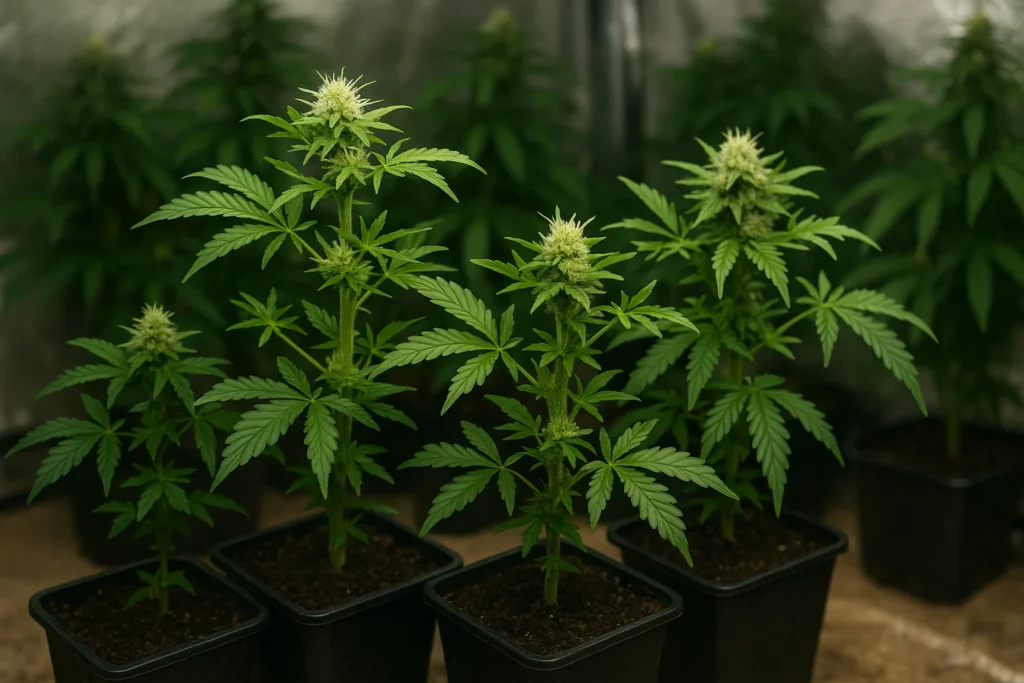
This is a process of “forcing” cuttings to re-vegetate again. You take fresh cuttings from a flowering cannabis plant and revert them to the vegetative stage. This method can give bushier plants with more bud sites. However, it requires patience and careful environmental control.
Aeroponic and Hydroponic Cloning
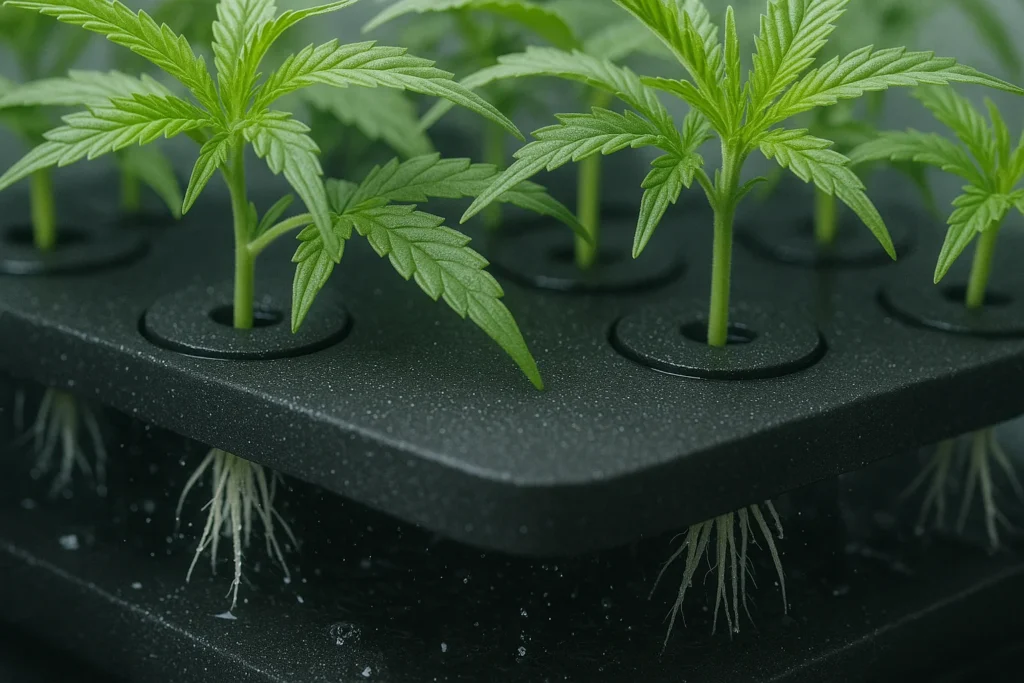
This technique uses an aeroponic cloner or hydroponic system as the medium to root cuttings. The water needs to be well-oxygenated and nutrient-dense. This system helps clones root faster, but it requires more equipment and monitoring.
Organic Cloning
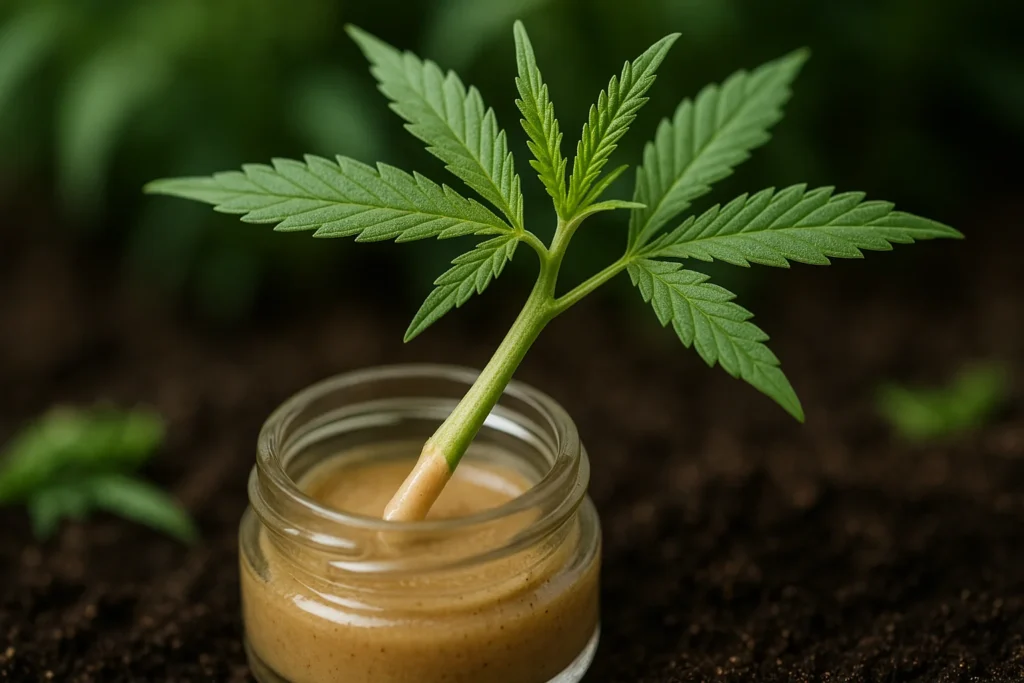
This method is becoming quite popular, especially as the demand for organic cannabis continues to surge. You can use any cloning method of your choice. However, instead of using synthetic rooting hormones, you can use natural rooting agents such as aloe vera, honey, or willow water.
What Is the Best Method for Cloning Cannabis?
The best method for cloning cannabis for beginners is rockwool because it is affordable, simple to implement, and gives good results due to its fantastic water retention and aeration abilities.
Intermediate and expert growers may opt for more advanced techniques that yield higher results, such as hydroponics and aeroponics. Here is a breakdown of the standard cannabis cloning methods.
1. Rockwool Cubes
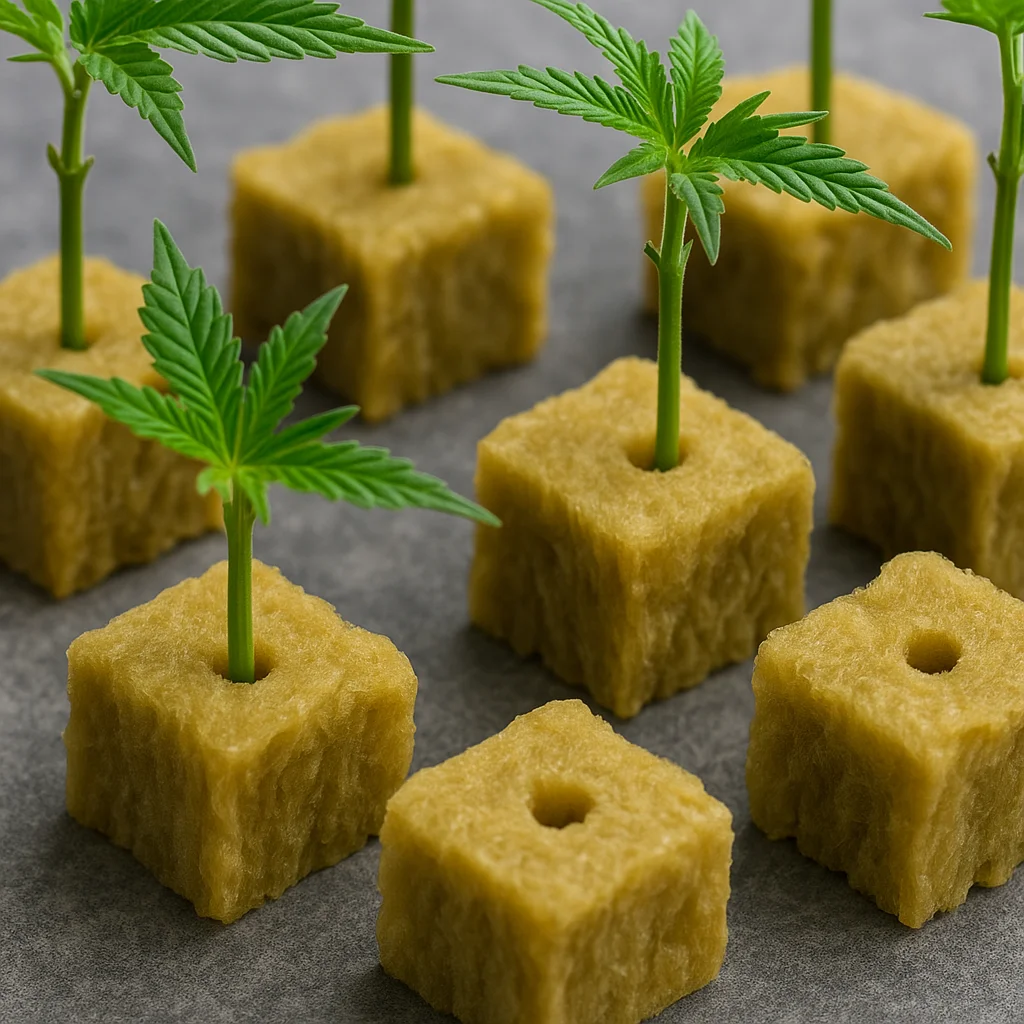
Rockwool is made from spun volcanic rock fibers and is widely used in cannabis cloning. It has excellent water retention and aeration properties. It can retain moisture well without becoming waterlogged, which provides an ideal environment for root development.
Pros:
- Strong enough to hold cuttings upright
- Sterile, reducing contamination risks
- Easy to handle and transplant once roots develop
- Good for both beginners and commercial growers
Cons:
- Requires pre-treatment: soaking in pH-adjusted water (around 5.2 to 6.0) to stabilize pH and load nutrients.
- Fragile fibers can lose their structure when squeezed; this will reduce air retention.
- It is not very environmentally friendly because it is synthetic.
2. Water Cloning
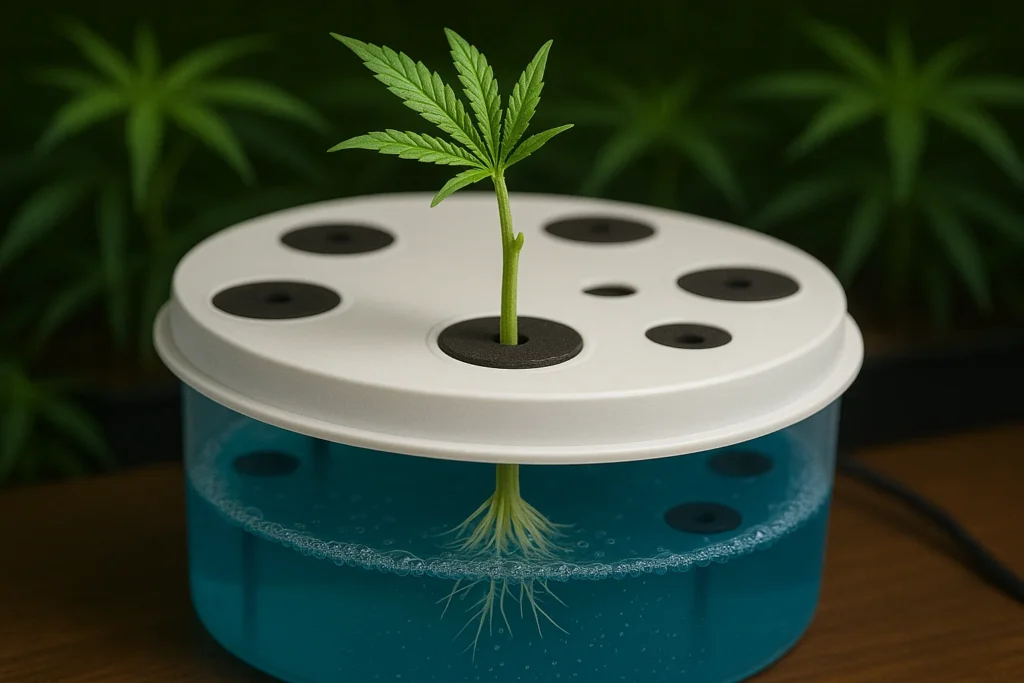
This method is both cheap and straightforward. All you will need to do is place the cuttings directly in water until the roots develop. You can also add mild nutrients or natural rooting hormones, such as diluted apple cider vinegar or willow water.
Pros:
- Minimal equipment needed
- Easy to monitor the roots through the water
- Natural and inexpensive
Cons:
- The risk of algae if the water is contaminated, which can block root capillaries.
- It requires frequent water changes to keep the solution fresh.
- Leaves and roots are fragile, making it harder to transplant.
3. Coco Coir
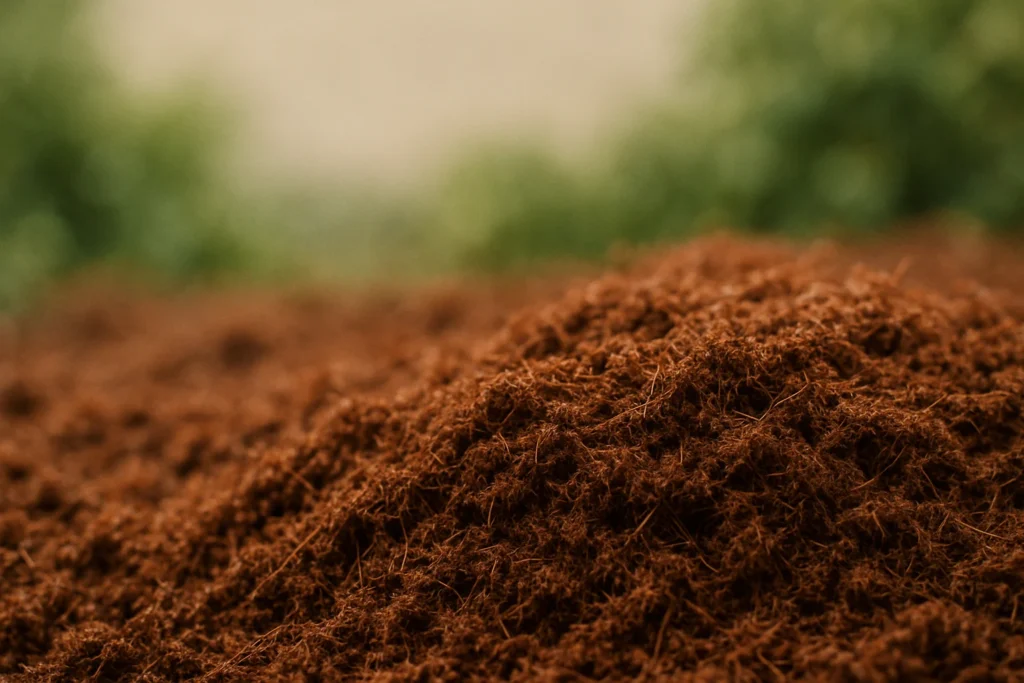
Coco coir is a natural fiber from coconut husks. It is a medium that is well-aerated and can retain moisture effectively. At the same time, it has good drainage even when it is fully soaked.
Pros:
- It has a natural pH
- It has good drainage and air retention
- It is easy to handle and transplant
Cons:
- Needs to be kept consistently moist but not waterlogged
- May require buffering to stabilize nutrient availability
4. Perlite and Vermiculite
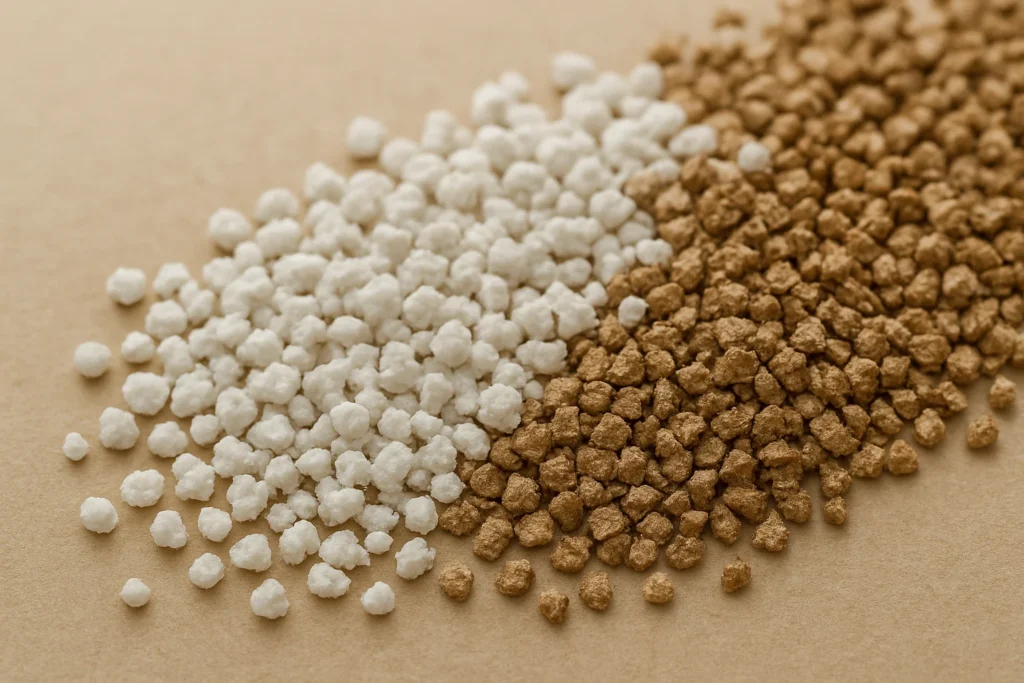
These are both mineral-based substrates that offer good aeration and drainage.
Pros:
- Excellent aeration (perlite) and moisture retention (vermiculite)
- They are sterile and lightweight
- Can be mixed with other media to balance their properties
Cons:
- Perlite can easily dry out, hence it requires frequent watering to maintain moisture levels
- May require pairing with other substrates for best results
5. Soil
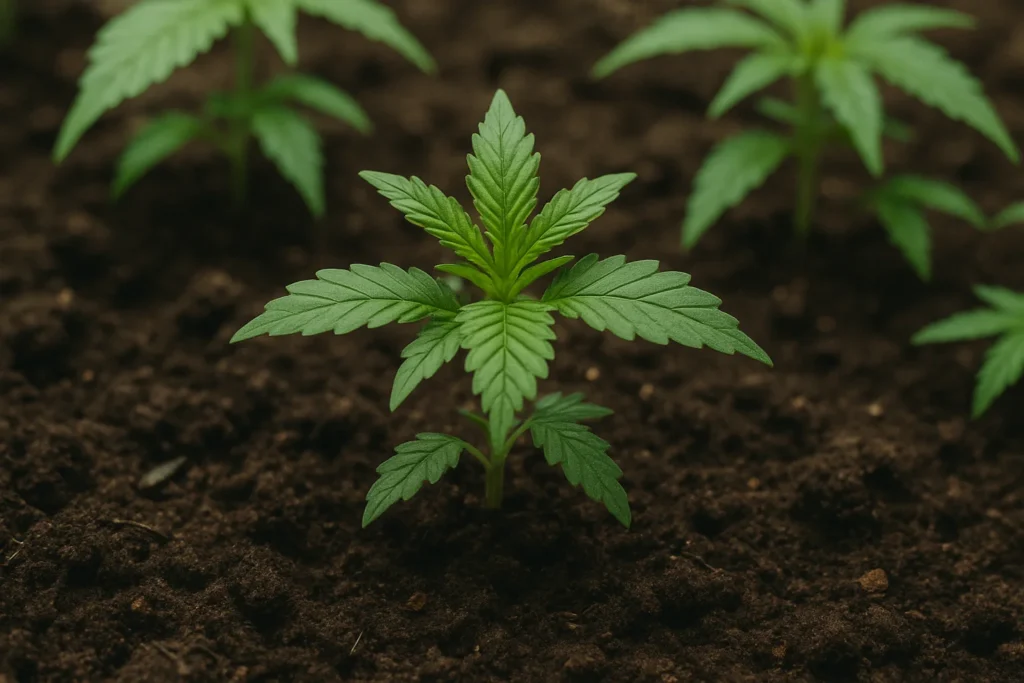
You can clone cannabis cuttings directly into soil.
Pros:
- Cuttings get natural nutrients in the right proportions
- Provides a stable medium for cuttings
- Familiar to many growers, including beginners
Cons:
- Risk of pathogens and pests
- Can be heavy and compact, reducing aeration
6. Aeroponics and Hydroponic Cloning Systems
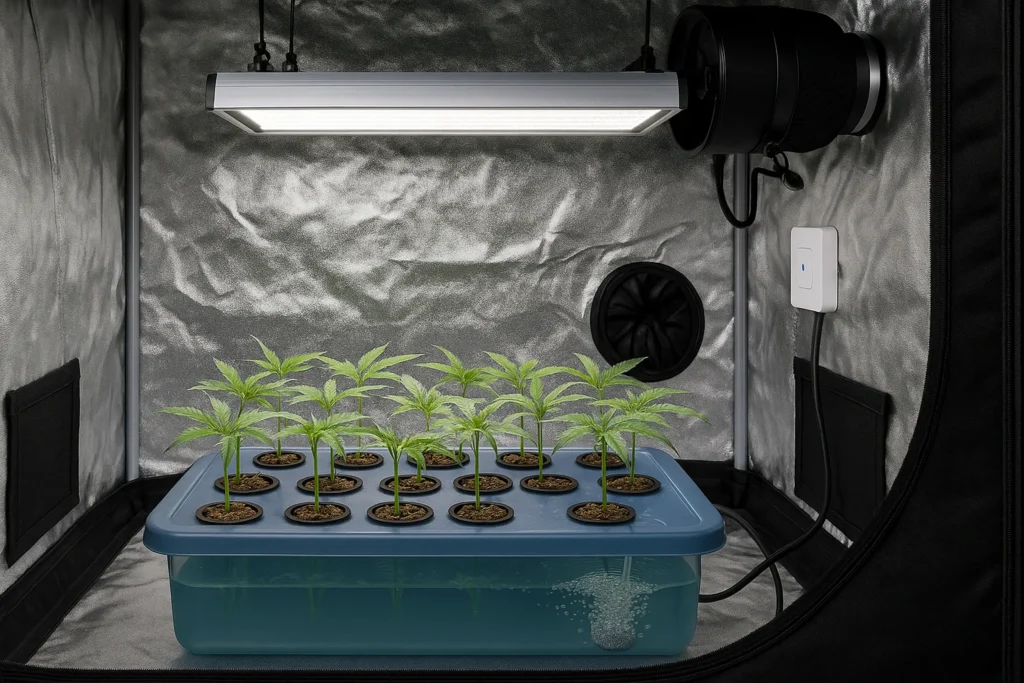
In aeroponic systems, the cuttings are suspended in the air, and the roots are sprayed with nutrient-rich mist. In a hydroponic system, a hydroponic cloning machine is used to provide a water-based rooting environment with adequate aeration.
Pros:
- Offers a sterile environment
- Ideal nutrient and oxygen availability means faster rooting
- A controlled environment reduces disease risk
- Automated system reduces errors and have higher success rates
Cons:
- The equipment required is costly
- Requires expertise, monitoring, and maintenance
| Medium | Pros | Cons | Best For |
| Rockwool | Sterile, good moisture & aeration | Requires pH prep, synthetic | Beginners |
| Water | Cheap, easy to monitor roots | Algae risk, fragile roots | Budget growers with intermediate experience |
| Coco Coir | Natural, good drainage & moisture | Needs moisture management | Organic growers |
| Perlite/Vermiculite | Excellent aeration & moisture balance | Dries quickly, usually mixed | Experienced growers |
| Soil | Natural nutrients, stable | Pathogen risk, less aeration | Organic/traditional growers |
| Aeroponic/Hydroponic | Fast rooting, automated, sterile | Expensive, complex | Commercial & advanced growers |
Factors Affecting Rooting Speed
Sunlight plays a big role in determining how fast your cannabis clones will root. Plenty of sunlight (up to 18 hours a day- 2,000 to 5,000 foot-candles) will ensure the clones root faster. But avoid setting the clones in direct sunlight. Warmer temperatures also speed things up. But that’s not all. Here are some key factors that affect rooting speed:
1. Genetics of the Mother Plant
Some strains will root faster than others due to their inherent biological traits. Indica-dominant strains, for example, roots tend to grow quickly compared to sativa-dominant strains.
When selecting a mother plant to work with, determine the expected rooting speed. If the cutting takes longer than expected, you can begin troubleshooting potential rooting problems.
2. Humidity and Temperature
Humidity and temperature are key factors in how fast your cannabis clones will root. You need to maintain the temperature between 21°C and 27°C for the roots to grow quickly.
Humidity levels should be maintained between 70% and 80%. This will prevent the cuttings from drying out before they are transplanted. It will also minimize transplant shock.
It is advisable to use a humidity dome or propagation chamber to maintain ideal temperature and humidity conditions. Sudden fluctuations will stress the clones and delay rooting.
3. Health of Mother Plants
The condition of the mother plant directly impacts the vigor and rooting ability of the clones. Cuttings taken from healthy and well-nourished mother plants will root faster and have higher survival rates.
It’s best to take clones from plants in the vegetative stage, especially from lower branches. At this stage, natural rooting hormones are concentrated, and the clones will root more quickly and generally perform better.
4. Type of Rooting Medium
The rooting medium affects moisture retention, aeration, and overall root health. Some media, like rockwool, balance moisture and oxygen well, which promotes faster root growth. Soil and coco coir can also be effective, but will require more careful moisture management to avoid overwatering or drying out.
Hydroponic or aeroponic systems are expensive to start. However, they offer ideal conditions that can accelerate rooting. Choosing the right medium for your setup and experience level will facilitate faster rooting.
5. Rooting Hormones
You can always trigger your clones to root faster, and one way to do that is to add rooting hormones. These products contain auxins and other compounds that encourage cells to develop into roots, thereby significantly accelerating the process.
While not strictly necessary, rooting hormones can boost success rates and reduce rooting time by up to 20%. They are especially useful when cloning difficult strains or when environmental conditions are less than ideal.
| Why Are My Clones Dying? Your clones are likely dying because the media is too wet. Moisture and humidity are very important for successful cloning, but too much moisture is never good. Wet media reduces the oxygen levels in the media, which also exposes the roots to rot. In case you notice your clones drying, try introducing an aquarium pump to oxygenate the medium. |
Troubleshooting Common Cloning Issues
You might have done everything right, but still, your clones fail to root as they should; it happens. Where do you start? The next section is your starter pack for troubleshooting common cloning issues with cannabis.
Wilting Leaves
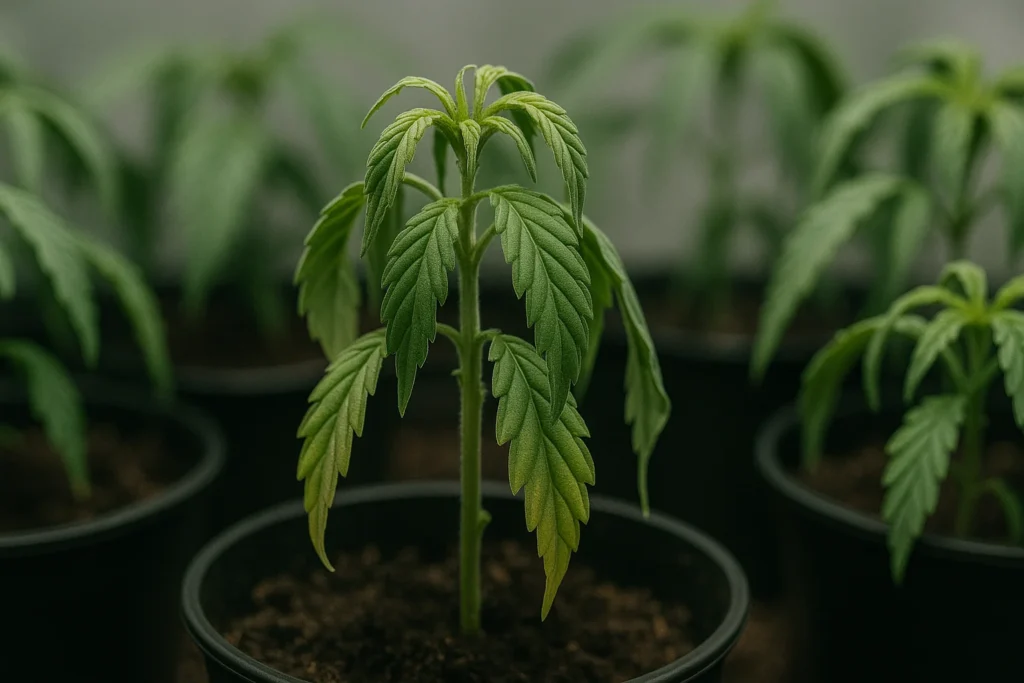
Cause: Wilting is a sign of excessive moisture loss; your clone is losing more moisture than it can absorb. This is often due to low humidity or too much light.
Solution:
- Check the humidity levels and adjust them to around 70–80%. Having a humidity dome will help with this.
- Reduce the intensity of grow lights or move clones further away from the light source.
- Keep the cuttings away from direct sunlight.
Rotting Stems
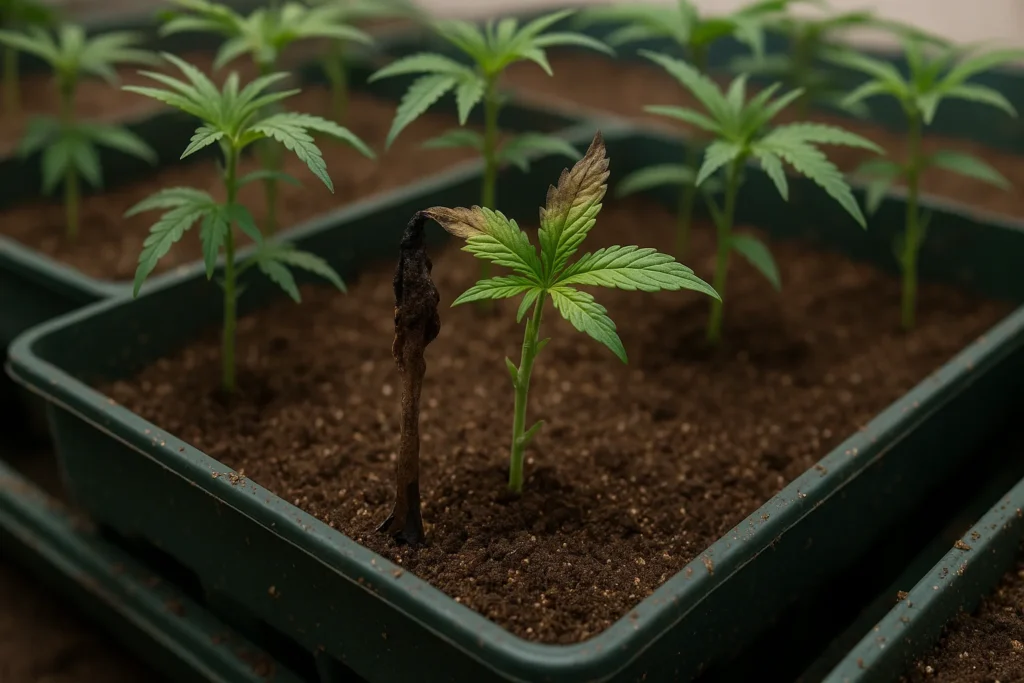
Cause: Rotting, or stem rot, is caused by soggy soil that creates a conducive environment for fungus. This can be due to overwatering or even poor air circulation.
Solution:
- Ensure that your rooting medium has good drainage. You can add organic matter like compost, perlite, or vermiculite.
- Ensure adequate ventilation; open the humidity dome vents occasionally, and you can also use a small fan to circulate air gently.
- Sterilize all tools and containers to minimize contamination with fungus.
- Remove any cuttings that are affected.
No Roots After Two Weeks
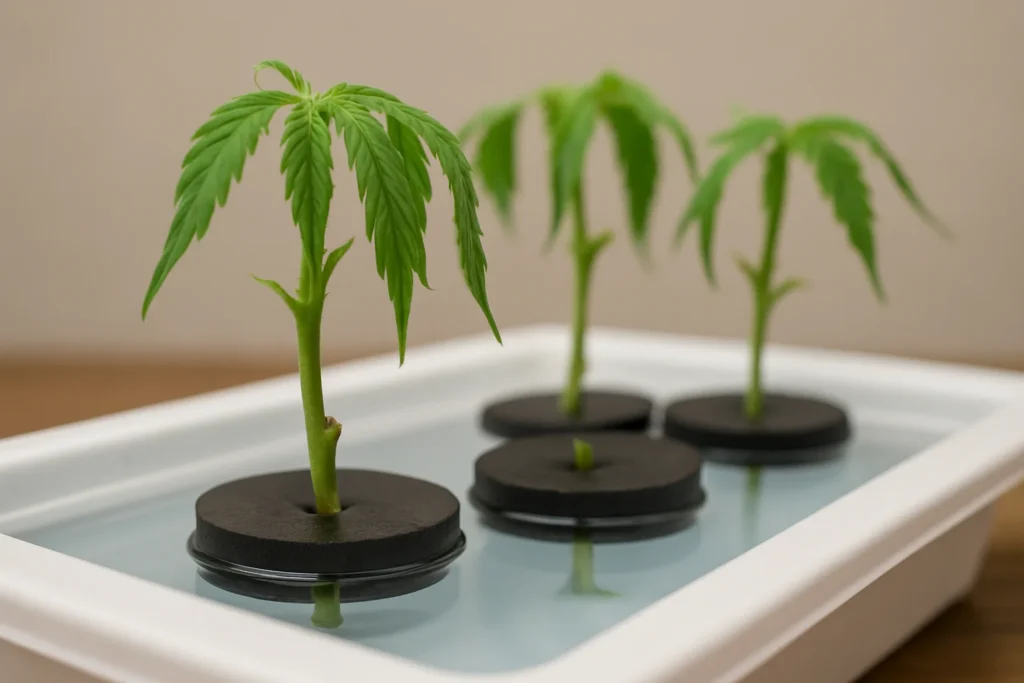
Cause: Roots can fail to develop because of temperature and humidity fluctuations, weak rooting hormones, and even sloppy cutting techniques.
Solution:
- Ensure that the temperature is maintained between 21–26°C and the humidity is 70% to 80%.
- Try a different or fresh rooting hormone.
- Make sure that the cuttings are cut at a 45-degree angle and below a node.
- Avoid overcrowding clones, as this can interfere with airflow.
Yellowing Leaves
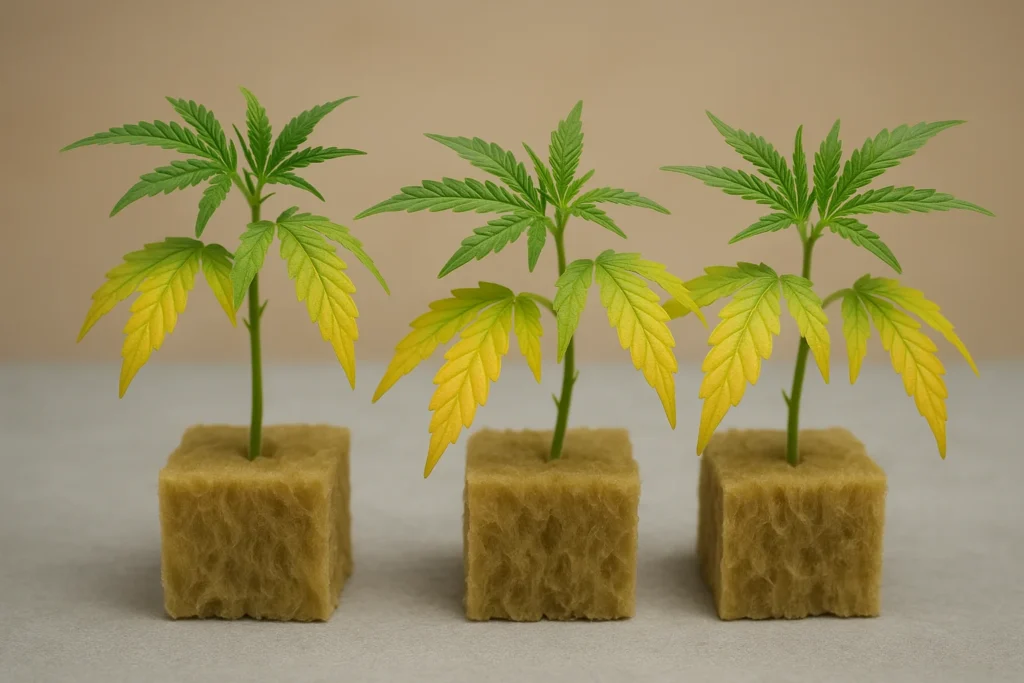
Cause: Yellow leaves are usually a sign of nutrient or water imbalances.
Solution:
- Avoid feeding clones nutrients too early; they rely primarily on stored energy during the rooting stage. Nutrients should only be introduced after roots have developed.
- Check watering practices to avoid overwatering or underwatering, both of which can cause leaf yellowing.
| Extra Tips for Avoiding Cloning Problems – Always sterilize your cutting tools, containers, and your cloning area to prevent infections. – Use a sharp blade and cut at a 45-degree angle. – Remove excess leaves to limit transpiration. – Regularly inspect clones for signs of mold, pests, or dehydration and adjust care accordingly. |
From Cloning to Convenience
There you have your expert guide on how to clone cannabis, complete with steps, visuals, and troubleshooting tips. Remember that getting it right involves starting with the right mother plant, choosing a suitable growth medium, and ensuring that you have temperature, humidity, light, and water in check. Should things go wrong, troubleshoot and take prompt action. It really is that simple.
Well, while cloning can be easy, guess what can be even easier? Purchasing high-quality THCA flower from The Hemp Doctor in bulk.Check out the best offers here.






